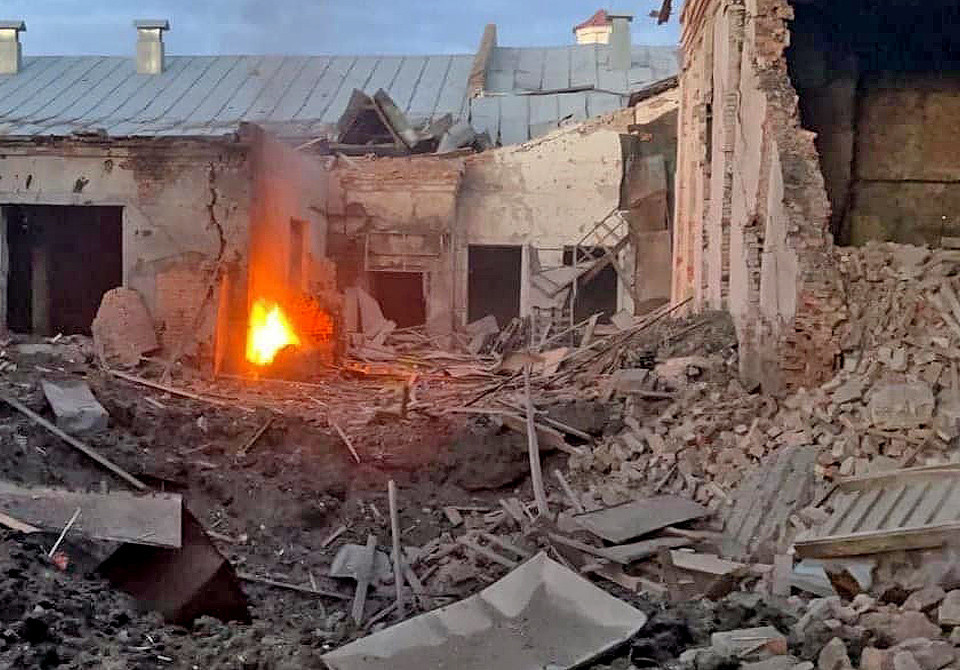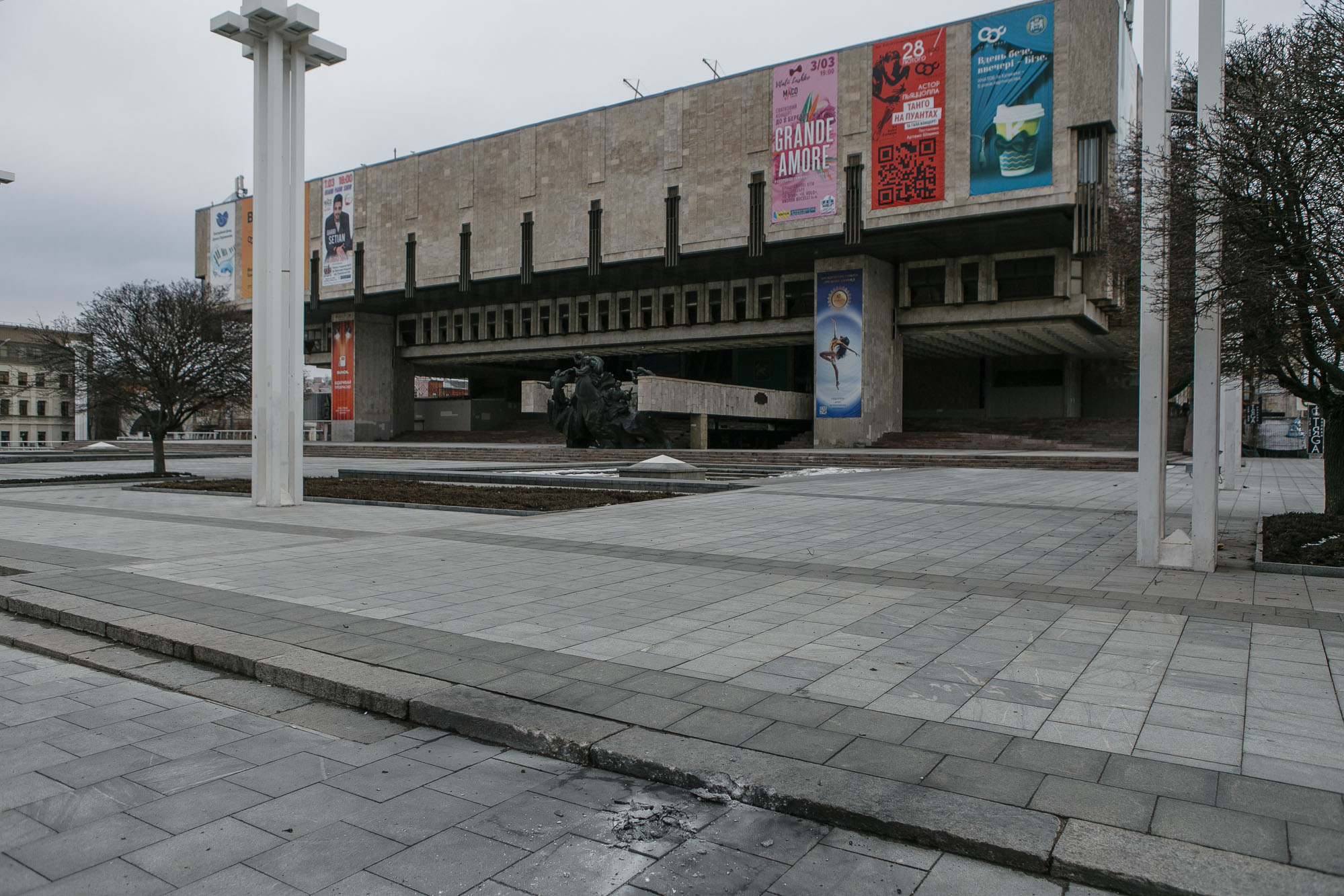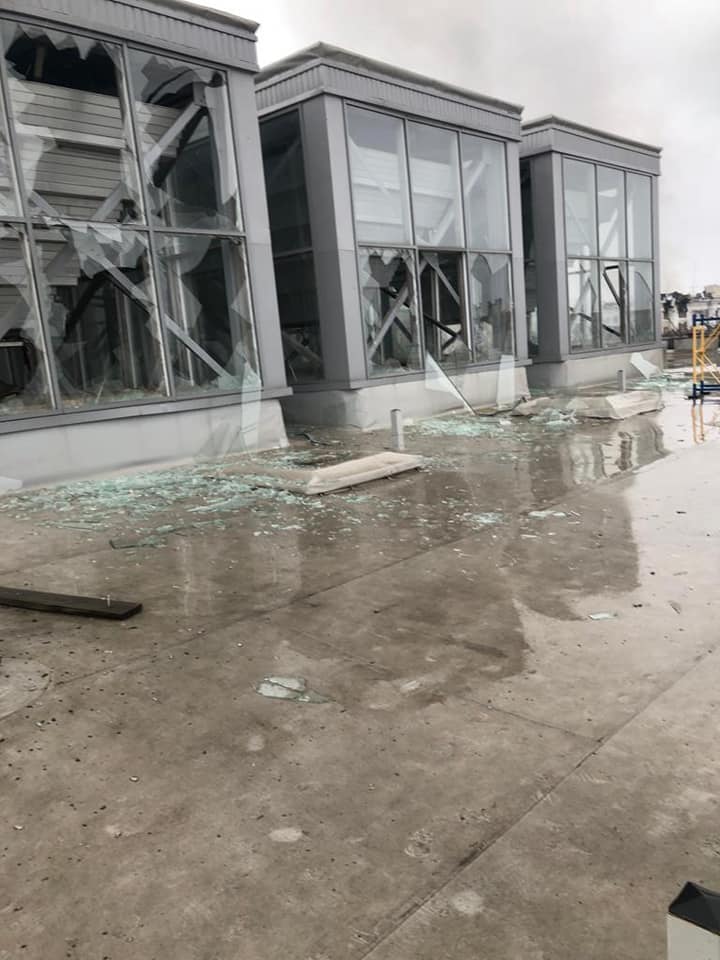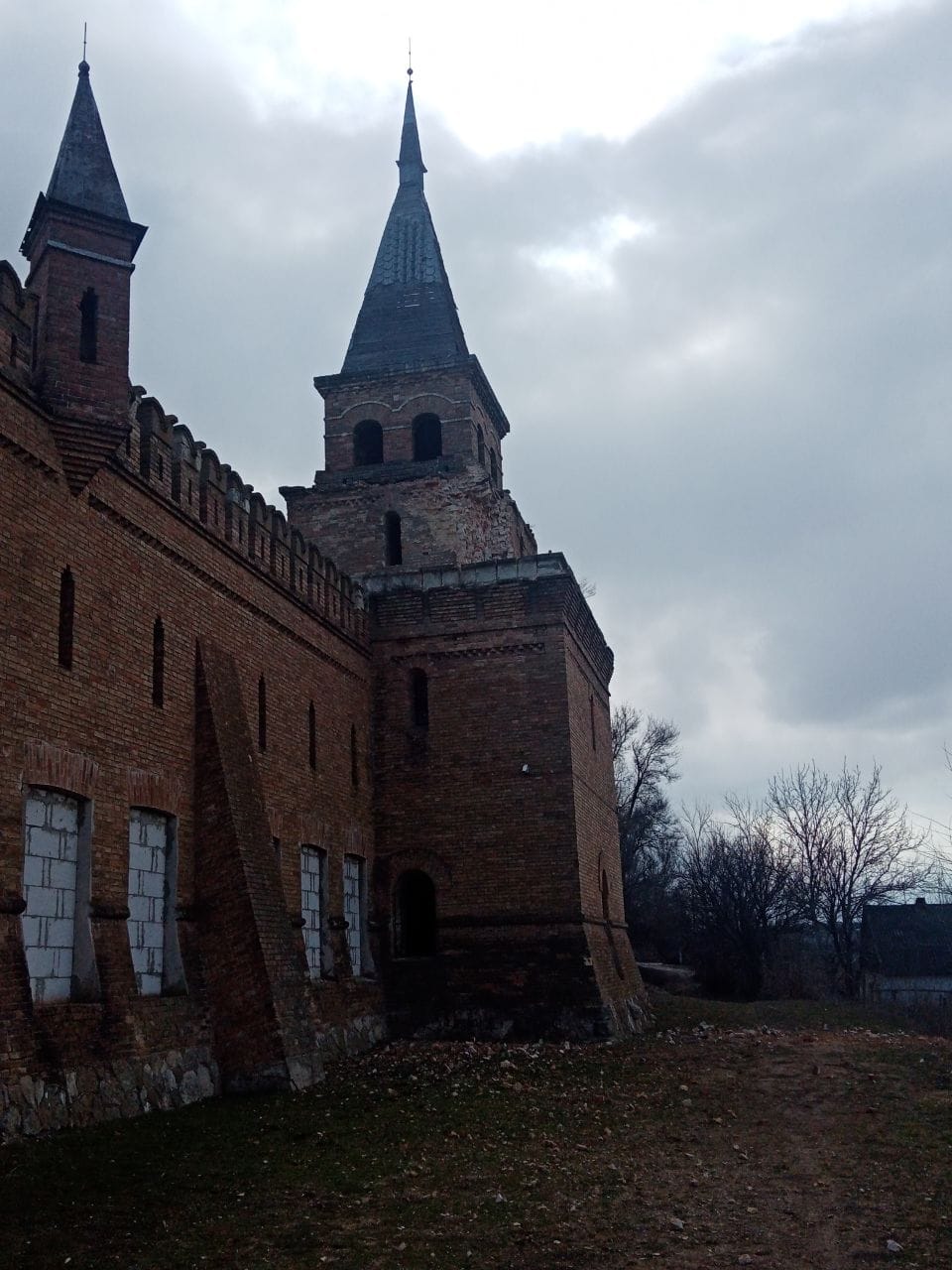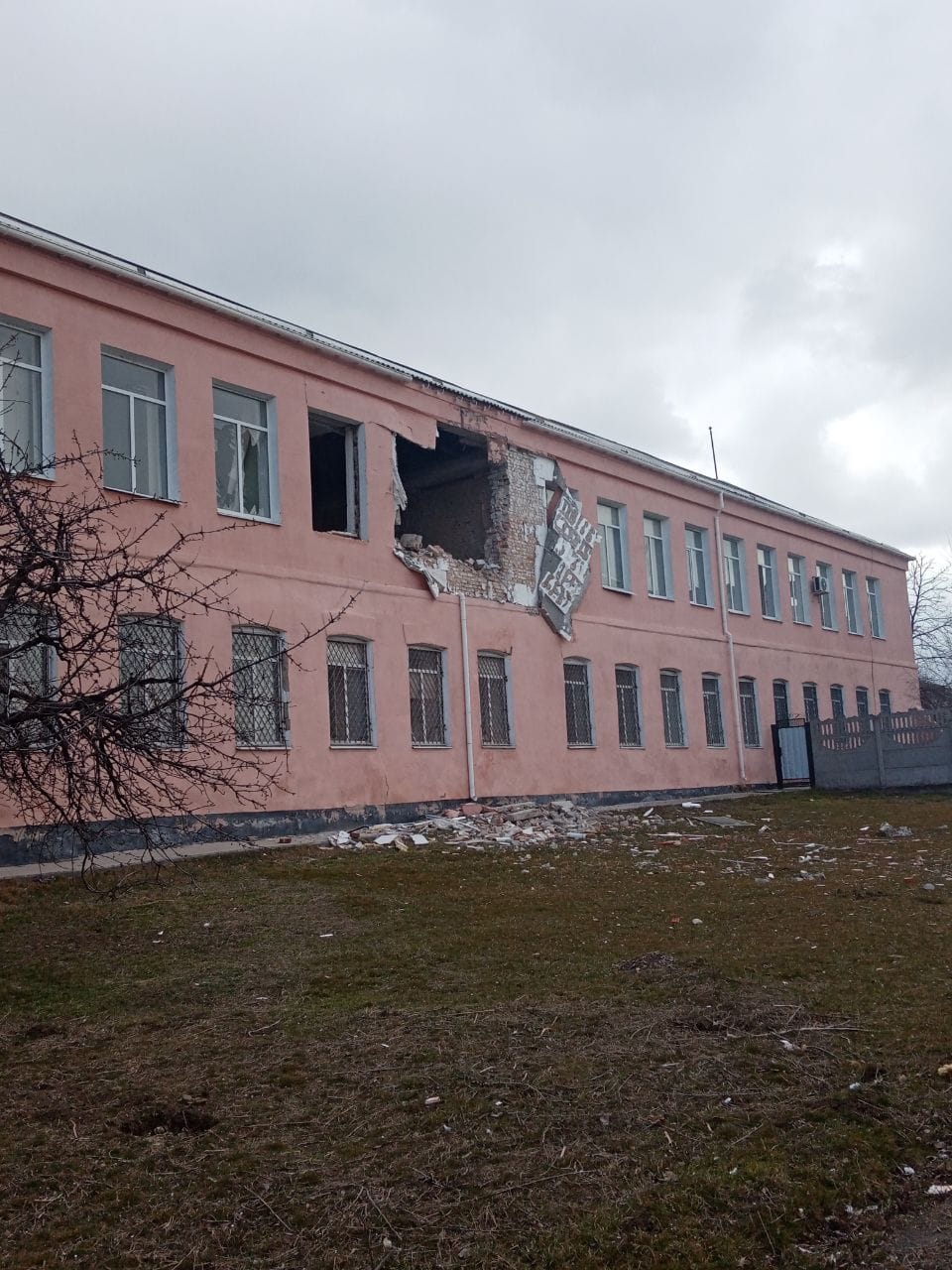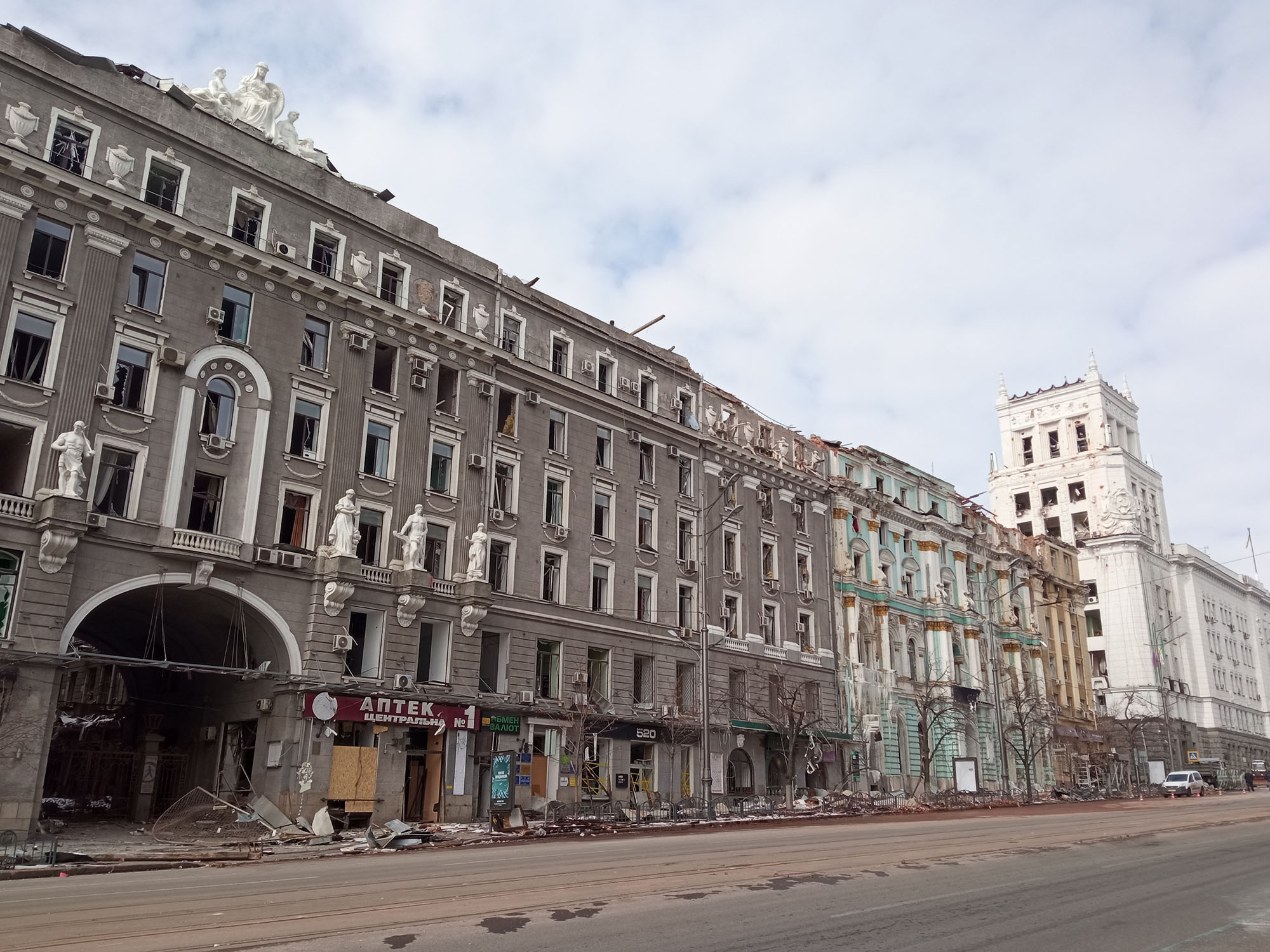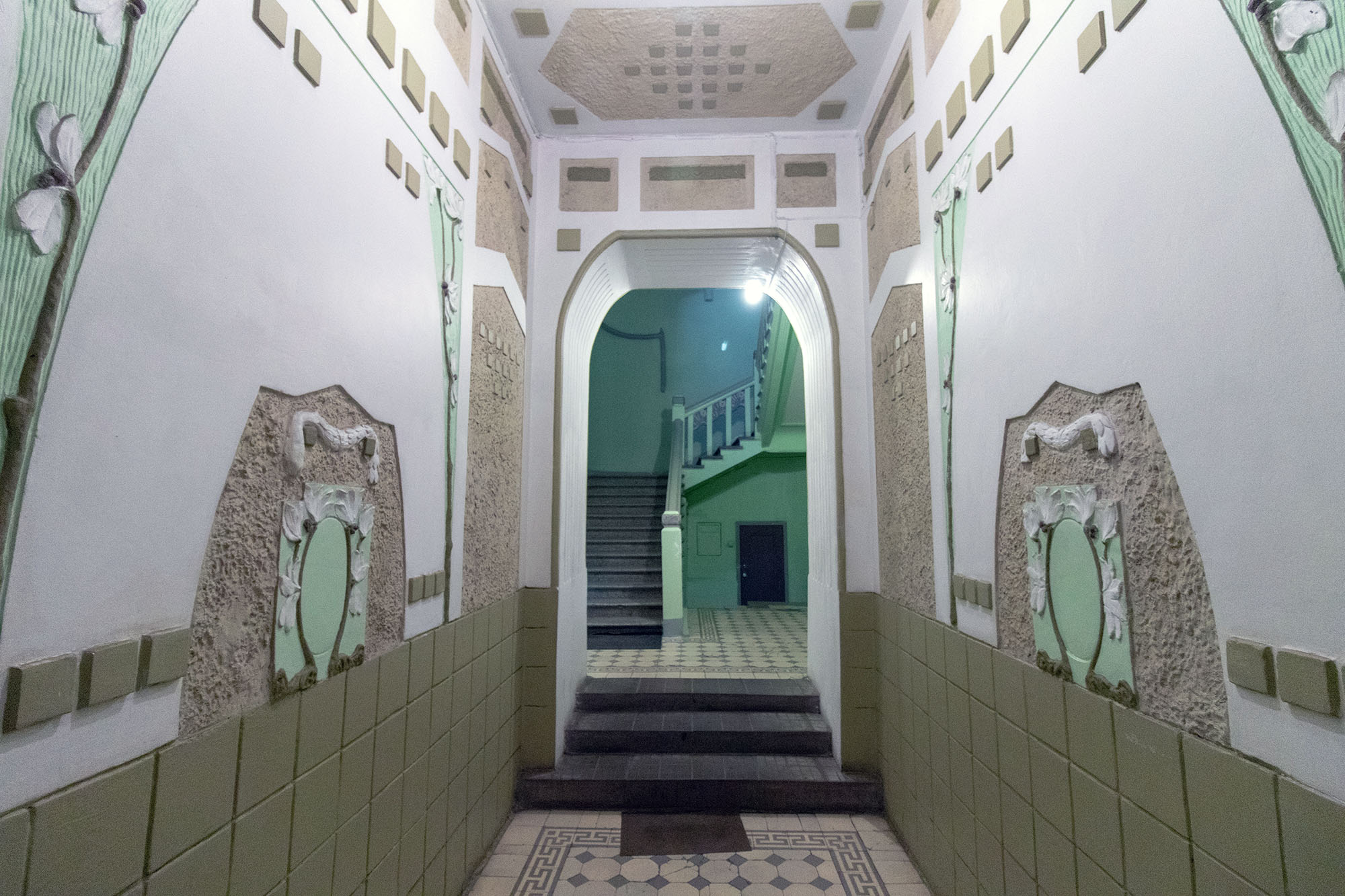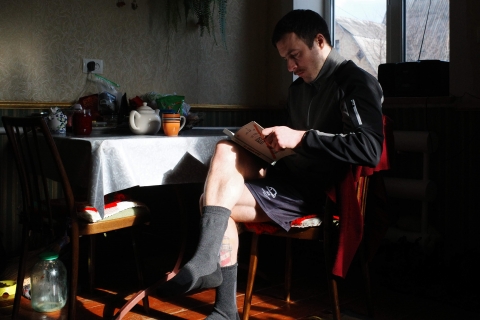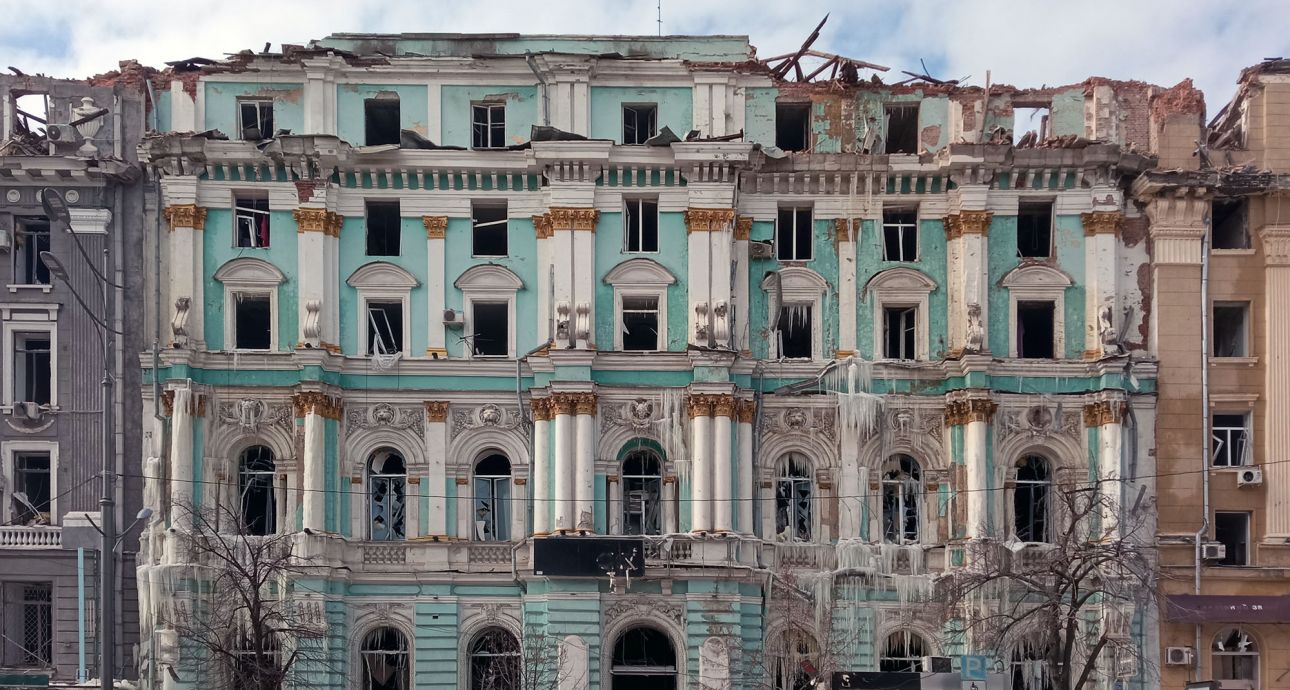
The Great Russian Destruction: Ukrainian Architectural Landmarks Damaged by the War
It is currently impossible to tell how many architectural landmarks have suffered over the three weeks of the war in Ukraine. Amid ongoing shelling, there is no way to take stock of the destroyed buildings or verify the authenticity of the information shared on the internet.
The Ministry of Culture of Ukraine has started collecting evidence of the Russian troops’ crimes against the Ukrainian cultural heritage. To that end, the officials have created a platform where anyone can upload photos of the destroyed landmarks. As of the 17th of March, the website had 67 documented cases of damage to landmarks, but there are probably many more of them.
Bird in Flight has compiled a list of buildings, the damage to which has sadly been confirmed. Fortunately, most of these still can be restored.
Libraries
Regional Youth Library in Chernihiv. Mutilated by shelling on the 11th of March. The roof, windows, and interiors were partially destroyed. The Neo-Gothic-style building constructed in the late 19th century housed an orphanage and the Vasyl Tarnovskyi Museum of Ukrainian Antiquities, where the Cossack-era artefacts and Taras Shevchenko’s belongings were kept. Also, there has been a library here since 1978.



Volodymyr Korolenko State Scientific Library in Kharkiv. This historical, architectural, and urban development landmark was built in 1899–1901 as per the design of famous architect Oleksii Beketov. As a result of the 13th of March shelling, windows were broken in the building, and the facade and interiors were damaged.
Theatres and concert halls
The former Shchors Cinema in Chernihiv is an architectural landmark constructed in 1935–1947. On the 27th of February, it sustained heavy damage from a missile strike.
The Dnipro House of Organ and Chamber Music (a.k.a. Bryansk Church) is an architectural landmark of national importance built in the early 20th century. It was damaged by shelling on the 11th of March, when shell fragments broke its windows and scarred the walls.
Kharkiv Opera and Ballet Theatre: judging by the photos, the building’s load-bearing structures are intact; only the glass was broken in windows and doors. The theatre was damaged on the 12th of March.
Donetsk Academic Regional Drama Theatre in Mariupol, where over 1,000 people were hiding. The architectural, historical, and monumental art landmark constructed in 1956–1960 was razed on the 16th of March by a bomb.

The Drama Theatre in Mariupol before the war. Photo: Wikimedia Commons
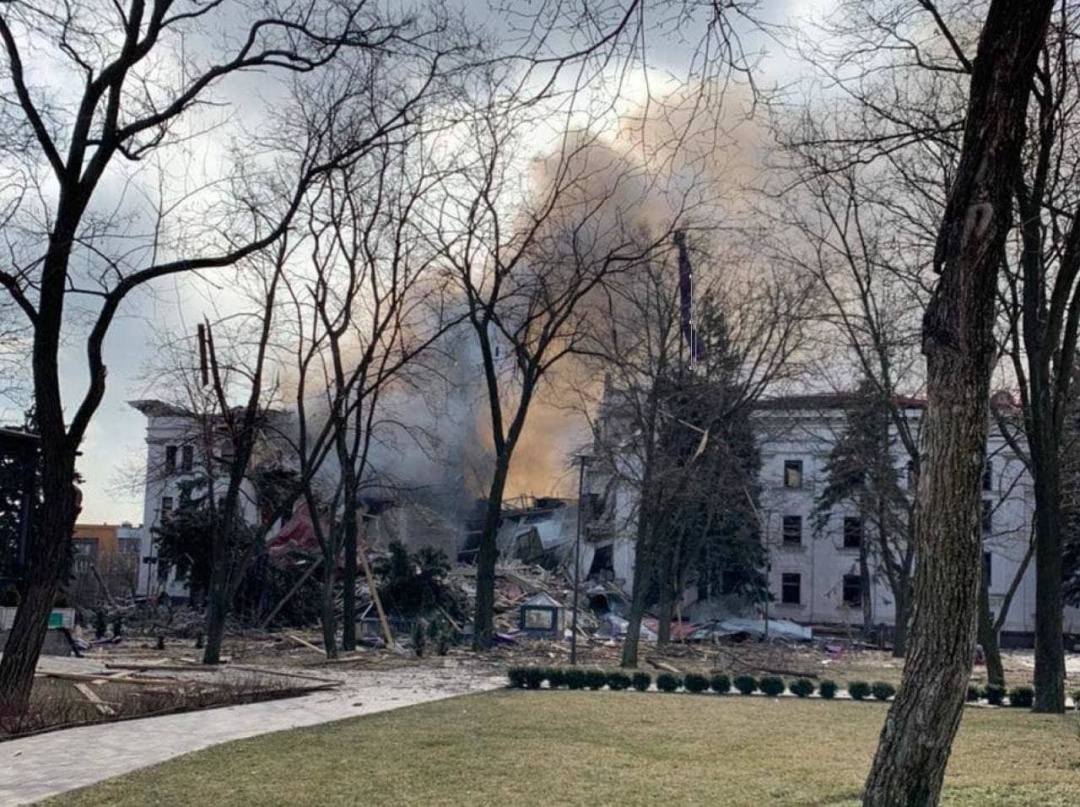
Museums
The Ivankiv Historical and Local History Museum in the Kyiv Region housed the works of Ukrainian artist Mariіa Prymachenko among other things. The building itself is not an architectural landmark but has a long history. Constructed in the 19th century, it was rebuilt multiple times during the Soviet era. On the 27th of February, it burned down with some of its exhibits.
The “Popov Manor” Museum’s stable and riding arena building and castle in Vasylivka, Zaporizhzhia Region. The complex combining the Moorish, Neo-Gothic, and Neo-Romanesque architecture was built in the 19th century. On the 7th of March, the museum’s walls were damaged. Also, the Russian troops looted it on the 13th of March, breaking some windows and even stealing marble toilet bowls.
Kharkiv Art Museum. The facade, windows, and stained glass were mangled. According to its management, the exhibits are intact, but the building needs to be isolated from the outdoor air to prevent damage to them.
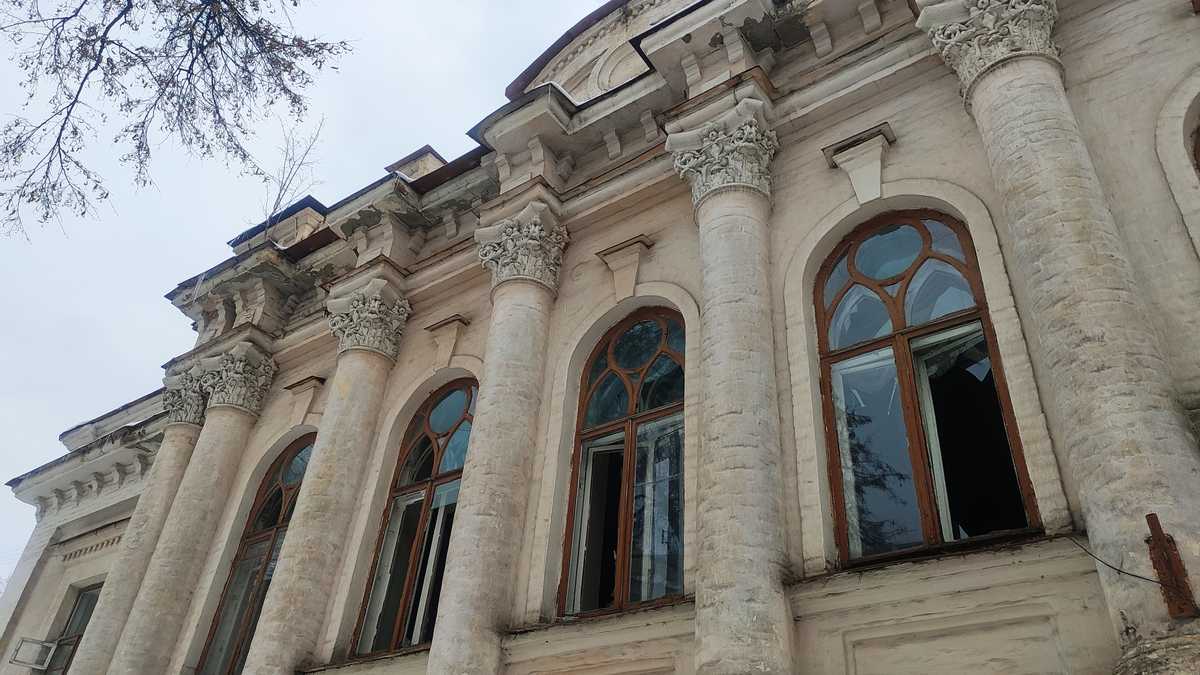
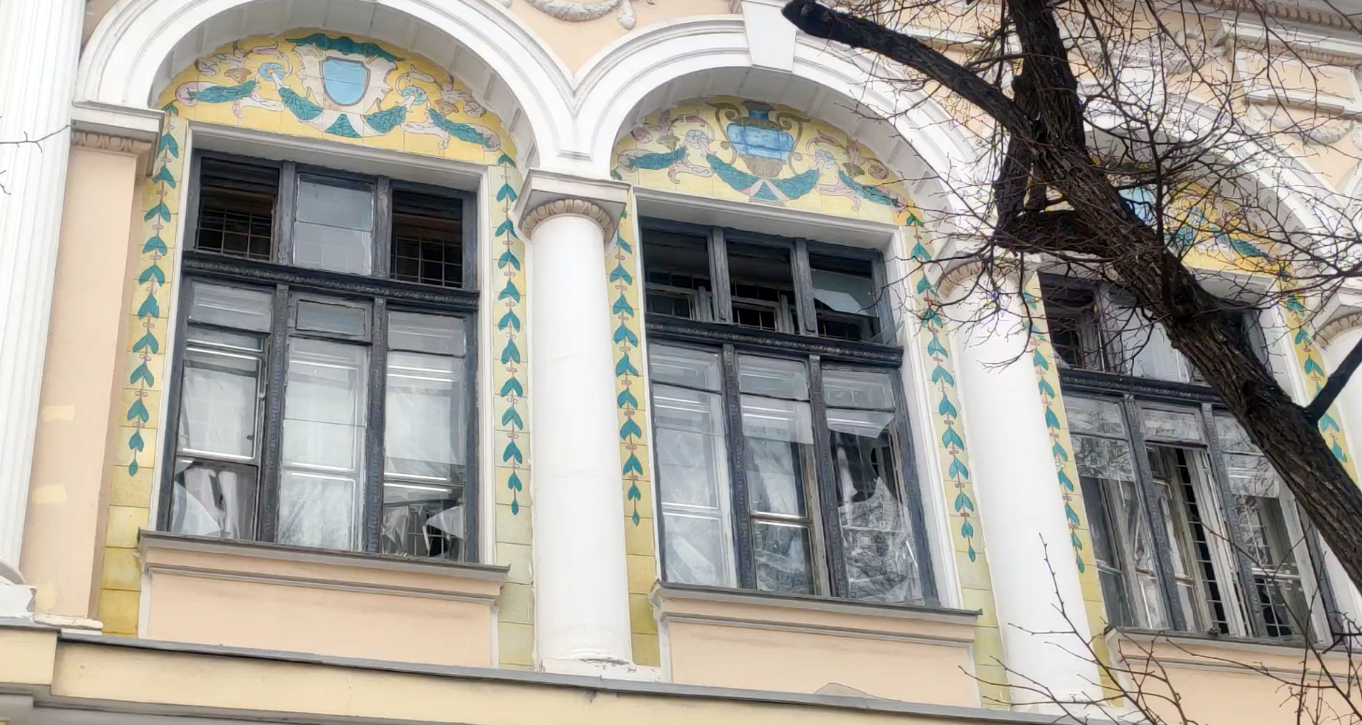
The Local History Museum in Okhtyrka, Sumy Region. During the shelling on the 9th of March, its windows were broken. Also, the roof was destroyed, and the walls were mutilated. The museum was located in the early 20th-century double-storey manor.

Other architectural landmarks
House of Soviets in Kharkiv (the Regional State Administration building). This specimen of the Stalin Empire style was built in 1954. On the 1st of March, the building was hit by a Kalibr missile. Its windows were broken and the roof was destroyed. Also, floor structures collapsed on some storeys.

Photo: Pavlo Dorohoi
The facade, roofing, and interiors of the House of the People’s Labour Commissariat built in 1925 were damaged on the 2d of March. The building accommodated the Economic Faculty of the Karazin Kharkiv National University.

Photo: Pavlo Dorohoi
The Palace of Labour and the Kharkiv City Council building on the Constitution Square in Kharkiv. The former—a Neoclassical architecture building—was constructed in 1916 as a rental house of the all-Russian insurance corporation “Rossiya”. The latter is a specimen of the Stalin Empire architectural style.
The building at 8, Freedom St in Kharkiv was constructed in 1911 and destroyed on the 14th of March together with its original Art-Nouveau entrance lobby decorations.
The Slovo Building in Kharkiv was constructed in 1926–1927 as per the project of Mykhailo Dashkevych at the request of a collective of writers, Ostap Vyshnia among them. The building is an architecture and urban development landmark that combines the traits of Art-Nouveau and Constructivist architecture. Many of the writers who lived or stayed with their friends here—Mykhailo Yarovyi, Ivan Bahrianyi, Les Kurbas, and others—were subjected to repressions in the 1930s and later became known as the Executed Renaissance. The building was mutilated d on the 7th of March.
Kyiv TV Tower. The tower was built in 1973 as per the project of engineer Vitalii Shymanovskyi without the involvement of tower cranes. The 385-metre structure is still the highest building in Ukraine. On the 1st of March, the Russian forces shelled the tower, damaging the equipment room and transformer substation. The shelling also hit the Babyn Yar Holocaust Memorial located nearby.

Kyiv TV Tower. Photo: Wikimedia Commons
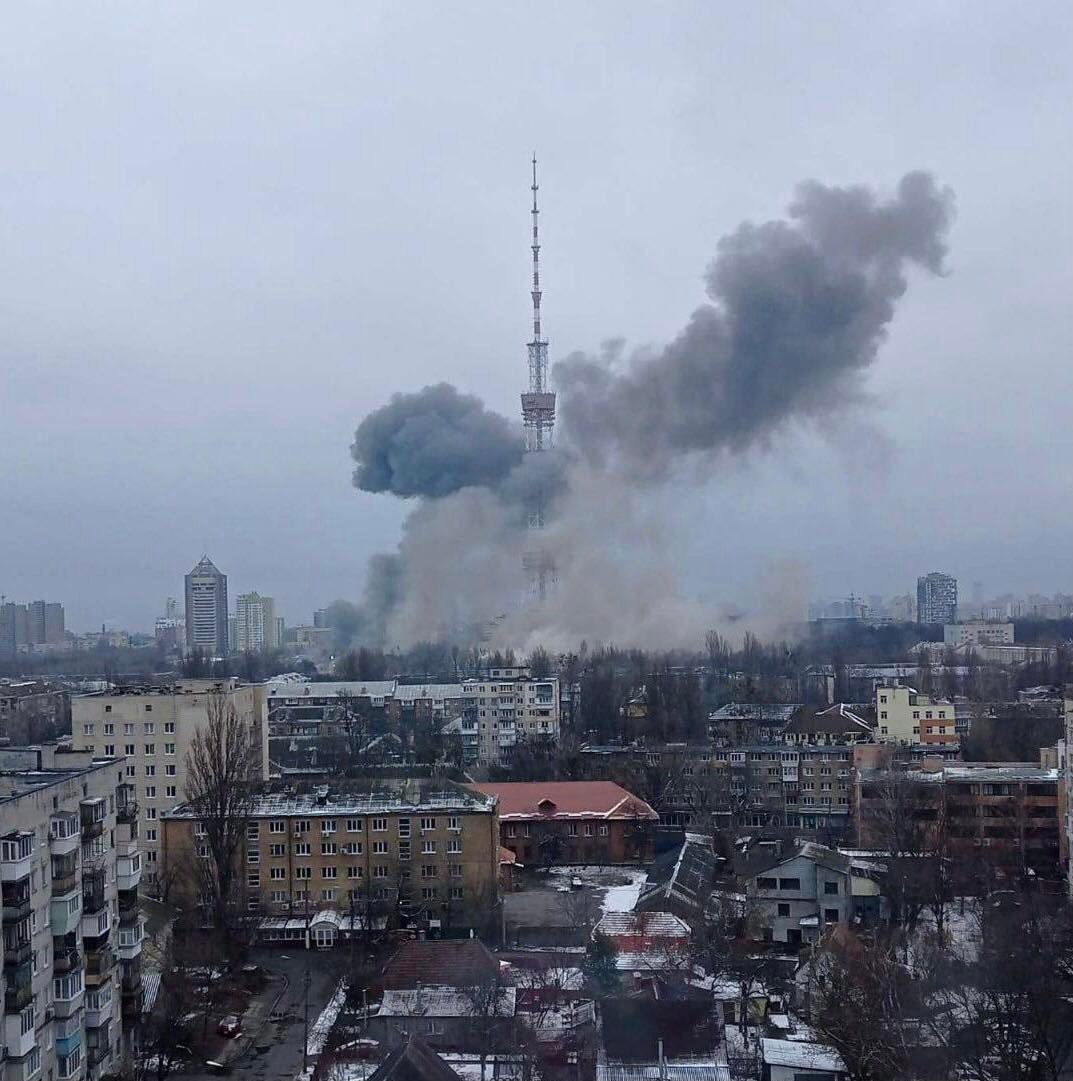
Shelling of the tower on the 1st of March
Religious buildings
At least 28 religious buildings were damaged by shelling, including the Sviatohirsk Lavra, the St. George’s Church—a 19th-century wooden church in Zavorychi, Kyiv Region—as well as the 19th-century Our Lady of Kazan Church in Chernihiv and the 18th–19th-century Dormition Cathedral in Kharkiv.
On the 7th of March, the wooden Orthodox Church of the Nativity of the Most Holy Theotokos—an architectural landmark of national significance—was destroyed by a direct missile impact. It was built in 1862.

The Church of the Nativity of the Most Holy Theotokos before it was destroyed. Photo: Wikimedia Commons

Cover photo: Pavlo Babeshko
All photos, if not credited otherwise: culturecrimes.mkip.gov.ua
New and best



